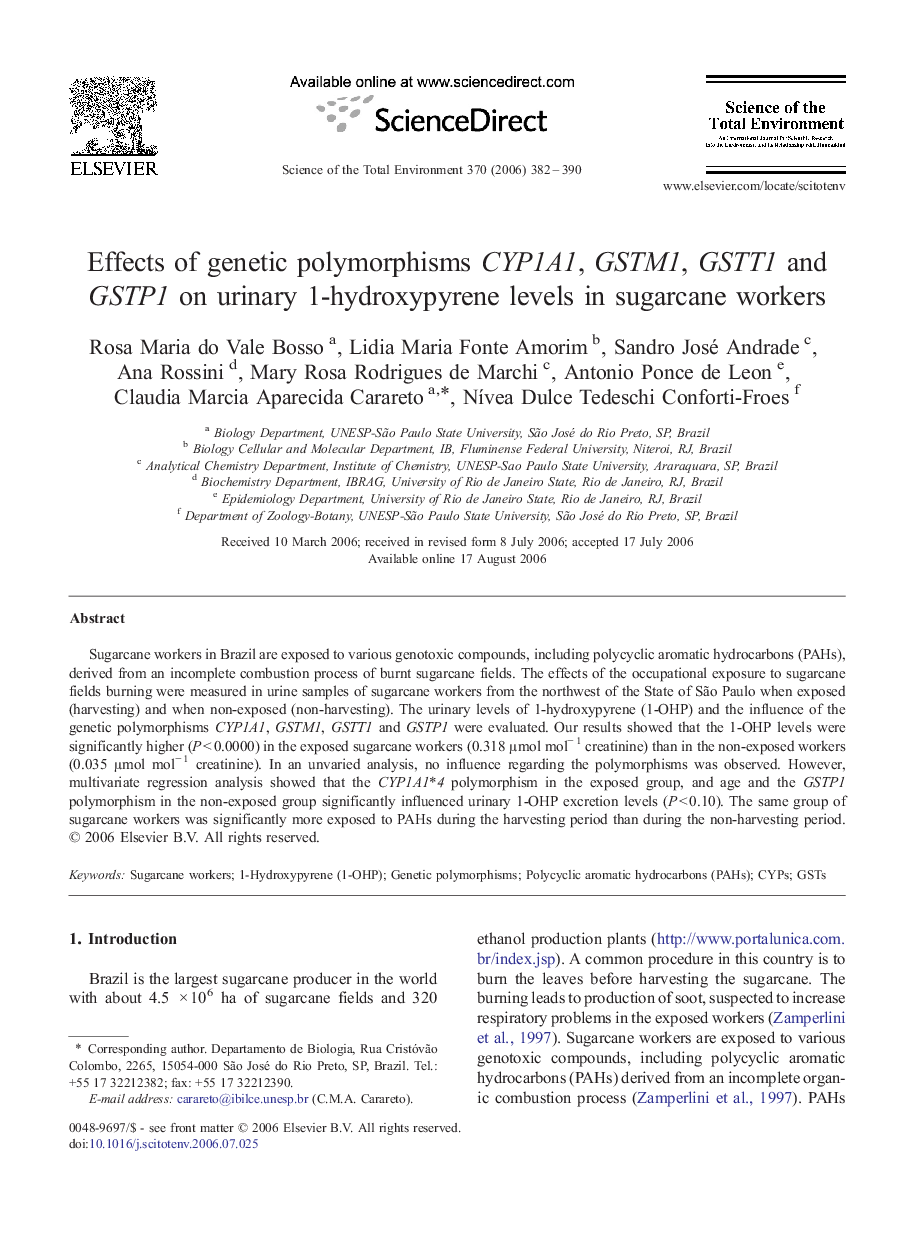| Article ID | Journal | Published Year | Pages | File Type |
|---|---|---|---|---|
| 4433667 | Science of The Total Environment | 2006 | 9 Pages |
Sugarcane workers in Brazil are exposed to various genotoxic compounds, including polycyclic aromatic hydrocarbons (PAHs), derived from an incomplete combustion process of burnt sugarcane fields. The effects of the occupational exposure to sugarcane fields burning were measured in urine samples of sugarcane workers from the northwest of the State of São Paulo when exposed (harvesting) and when non-exposed (non-harvesting). The urinary levels of 1-hydroxypyrene (1-OHP) and the influence of the genetic polymorphisms CYP1A1, GSTM1, GSTT1 and GSTP1 were evaluated. Our results showed that the 1-OHP levels were significantly higher (P < 0.0000) in the exposed sugarcane workers (0.318 μmol mol− 1 creatinine) than in the non-exposed workers (0.035 μmol mol− 1 creatinine). In an unvaried analysis, no influence regarding the polymorphisms was observed. However, multivariate regression analysis showed that the CYP1A1⁎4 polymorphism in the exposed group, and age and the GSTP1 polymorphism in the non-exposed group significantly influenced urinary 1-OHP excretion levels (P < 0.10). The same group of sugarcane workers was significantly more exposed to PAHs during the harvesting period than during the non-harvesting period.
